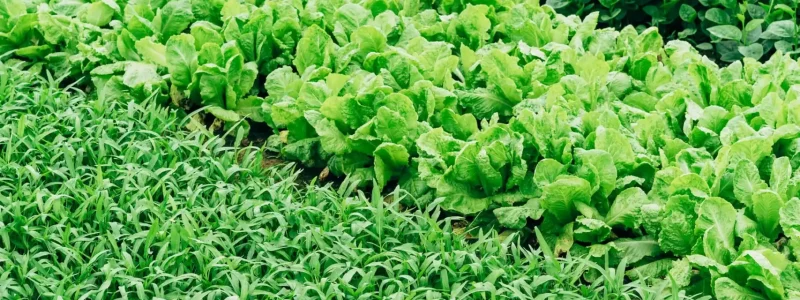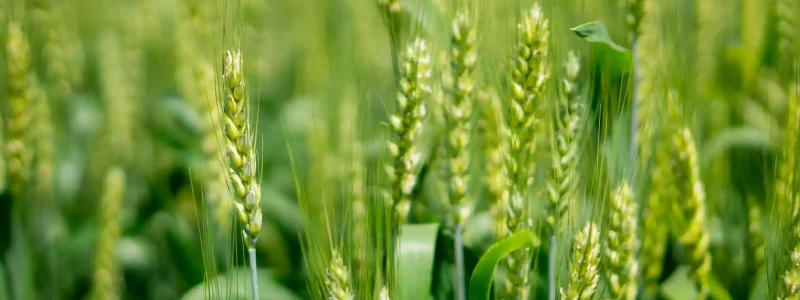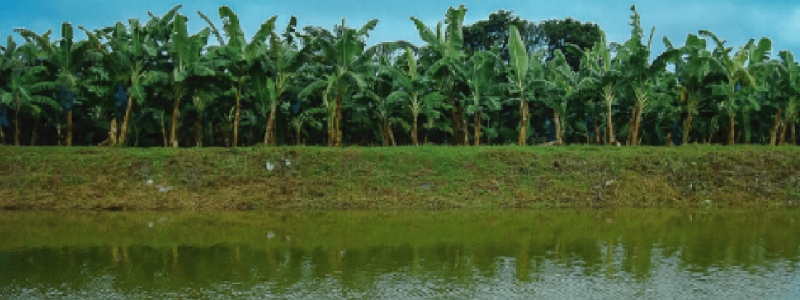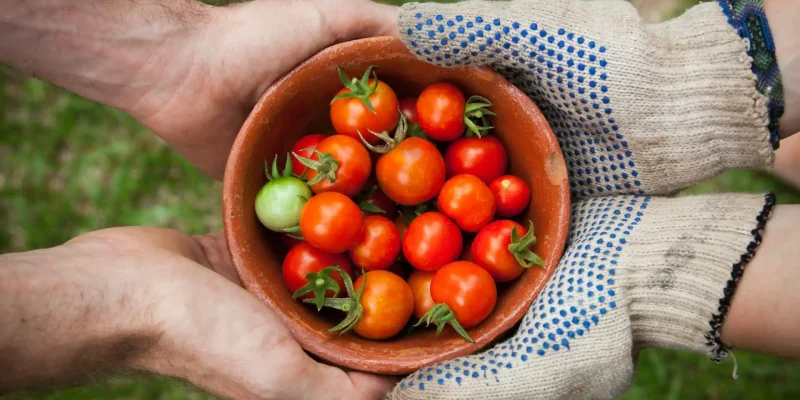In this 21st century, humanity finds itself immersed in a complex tapestry of challenges, where food security emerges as one of the crucial pillars. In a world interconnected by global networks of trade and communication, ensuring that every individual has constant access to nutritious food becomes imperative.
However, this noble mission is being threatened by a formidable adversary: climate change, an unrelenting force that challenges our ability to feed the growing global population. Furthermore, as we progress in this century, the interaction between food security and climate change becomes a critically relevant issue that we must urgently address.
In this context, it is essential to understand how these two elements are intertwined and what innovative strategies we can adopt to safeguard our food future on a planet in constant transformation.
A Global Challenge: Food Security
Food security is not just a technical term; it is the promise that every human being can meet their basic nutritional needs. To better grasp this issue, let’s consider a concrete example. In many regions of the world, such as the Horn of Africa, rural communities heavily rely on agriculture for their subsistence.
However, soil degradation due to inadequate agricultural practices has led to decreasing crop yields. This means that already vulnerable families struggle even more to access nutritious food suitable for their daily needs.
Furthermore, food security is challenged by rapid urbanization. In densely populated urban areas, like the megacities of Asia, the demand for fresh and nutritious food is constant. Lack of access to quality food can lead to malnutrition issues and exacerbate the gap between the rich and the poor. This underscores the importance of addressing food security on a global scale.
However, this noble objective faces systemic challenges. Soil degradation, water scarcity, and loss of biodiversity threaten the sustainability of our food systems. For instance, in many regions of South America, intensive agriculture has resulted in soil erosion and nutrient loss, negatively affecting the land’s ability to produce crops sustainably.
This illustrates how food security is a challenge that transcends individual regions or countries, impacting communities worldwide. Soil degradation, water scarcity, and biodiversity loss are issues that cross borders and require global solutions.
Degradation of Soil: A Silent Threat
One of the most insidious challenges to food security is soil degradation. Soil is the very foundation of agriculture, yet it is often overlooked. The world’s topsoil layer is eroding at an alarming rate, and soil quality is deteriorating due to intensive agricultural practices.
Soil degradation not only reduces crop yields but also contributes to water pollution and greenhouse gas emissions. To address this issue, sustainable agricultural practices such as conservation tillage and cover cropping are essential. These methods help restore soil health and reduce erosion, contributing to long-term food security.
Water Scarcity: The Thirsty Challenge
Water is another critical component of food production, and water scarcity poses a significant threat to global food security. As the world’s population grows, so does the demand for freshwater resources.
Climate change exacerbates water scarcity by altering rainfall patterns and increasing the frequency of droughts. In many regions, unsustainable water use practices deplete aquifers and rivers, further intensifying the crisis. To mitigate the impact of water scarcity on food security, efficient irrigation methods, water recycling, and improved water management are essential.

Loss of Biodiversity: The Act of Disappearance
Biodiversity loss is another facet of the food security challenge. A diverse ecosystem provides resilience against pests and diseases that can devastate crops. However, industrial agriculture often relies on monoculture farming, where a single crop is cultivated over large expanses of land. In these cases, it is important to be aware of this issue and actively apply sustainable practices in agriculture.
This monoculture approach increases the vulnerability of crops to pests and diseases. Additionally, biodiversity loss threatens pollinators, such as bees and butterflies, that play a vital role in crop pollination. To address this situation, promoting biodiversity on and around farms through agroforestry and cover cropping can enhance food security.
Harmonizing Agriculture and Climate Change Challenges
Climate change adds another layer to this already complex narrative. As temperatures rise, weather patterns become unpredictable, and extreme phenomena like droughts and floods become commonplace. The world’s agricultural lands are under threat.
Regions where food has been grown for generations face increasingly adverse conditions, while marginalized areas could emerge as future sources of production. Coastal communities, where much of our food production is concentrated, are at risk from rising sea levels.

Adaptation to Climate Change: Resilience in Agriculture
To address the challenges posed by climate change in agriculture, it is crucial to consider the following key strategies:
- Climate-resilient crop varieties: Develop and promote crop varieties that are resistant to adverse weather conditions, such as droughts, floods, and extreme temperatures. These varieties can help maintain agricultural production even in challenging climatic conditions.
- Efficient irrigation technologies: Implement efficient irrigation systems that maximize water utilization and reduce wastage. This is essential in both drought-prone regions and those experiencing intermittent flooding.
- Sustainable farming practices: Promote agricultural practices that conserve soil health and reduce erosion, such as conservation agriculture and cover cropping. These practices enhance soil resilience and increase water retention capacity.
- Crop diversification: Encourage crop diversification on farms to reduce the risk associated with dependence on a single crop. Cultivating a variety of crops resistant to different climatic conditions enhances food security.
- Climate monitoring and forecasting: Utilize climate monitoring technologies and forecasting systems to anticipate extreme weather events and take preventive measures. This allows farmers to make informed decisions about when to plant, harvest, or apply agricultural treatments.
- Knowledge transfer: Facilitate the transfer of knowledge and best agricultural practices to rural communities and farmers, enabling them to effectively adapt to changing climate conditions.
- Infrastructure investment: Build and maintain resilient agricultural infrastructure, such as drainage and flood control systems, to mitigate the effects of sudden floods and other extreme weather conditions.
- Government support and agricultural policies: Promote government policies that support climate change adaptation in agriculture, including incentives for the adoption of sustainable practices and investment in agricultural research.
- Access to water resources: Ensure equitable and sustainable access to water resources, especially in areas affected by water scarcity due to climate change.
- Education and awareness: Raise public awareness about climate challenges in agriculture and the importance of agricultural resilience for long-term food security.
These fundamental points are key to strengthening agricultural resilience in the face of climate change, ensuring that farming communities can adapt and thrive in an ever-changing climate.

Adoption of Climate-Smart Agriculture
Climate-smart agriculture seeks to balance production with sustainability. This approach emphasizes the importance of adapting to changing climate conditions and mitigating greenhouse gas emissions from agriculture.
A key strategy is agroforestry, which combines crop cultivation with tree planting. Agroforestry not only helps sequester carbon from the atmosphere but also provides multiple benefits, including improved soil health and biodiversity conservation.
Water Management in a Changing Climate
As rainfall patterns shift and water resources become scarcer, effective water management becomes vital. In many regions, traditional irrigation methods are inefficient and wasteful. Transitioning to precision irrigation techniques, which deliver water directly to the plant root zone, can significantly reduce water wastage.
Additionally, rainwater harvesting and the use of treated wastewater in agriculture are sustainable solutions that can alleviate the pressures of water scarcity.
A key strategy is agroforestry, which combines crop cultivation with tree planting. Agroforestry not only helps sequester carbon from the atmosphere but also provides multiple benefits, including improved soil health and biodiversity conservation.
Unity is Strength
In the clash of titans between food security and climate change, the future of our relationship with food is being written. We cannot confront these challenges in isolation; a concerted global effort is required. As we navigate uncertain terrain, the strategies discussed here provide a beacon of hope. The resilience of our food systems lies in our ability to adapt, innovate, and work together.
Looking ahead, bold policies that foster international collaboration and invest in agricultural research are needed. The widespread adoption of sustainable technologies must be the mantra of the next decade. Food security in a changing climate isn’t just a goal; it’s a reminder that our survival is intertwined with the land we cultivate and the resources we share. Ultimately, this challenge unites us in the common pursuit of well-nourished and sustainable lives on our changing planet.
The challenges of food security and climate change are multifaceted and interconnected. Addressing these challenges requires a holistic approach that encompasses sustainable farming practices, responsible water management, biodiversity conservation, and investment in research and technology. By working together on a global scale, we can build a more resilient and secure future where access to nutritious food is a reality for all.

